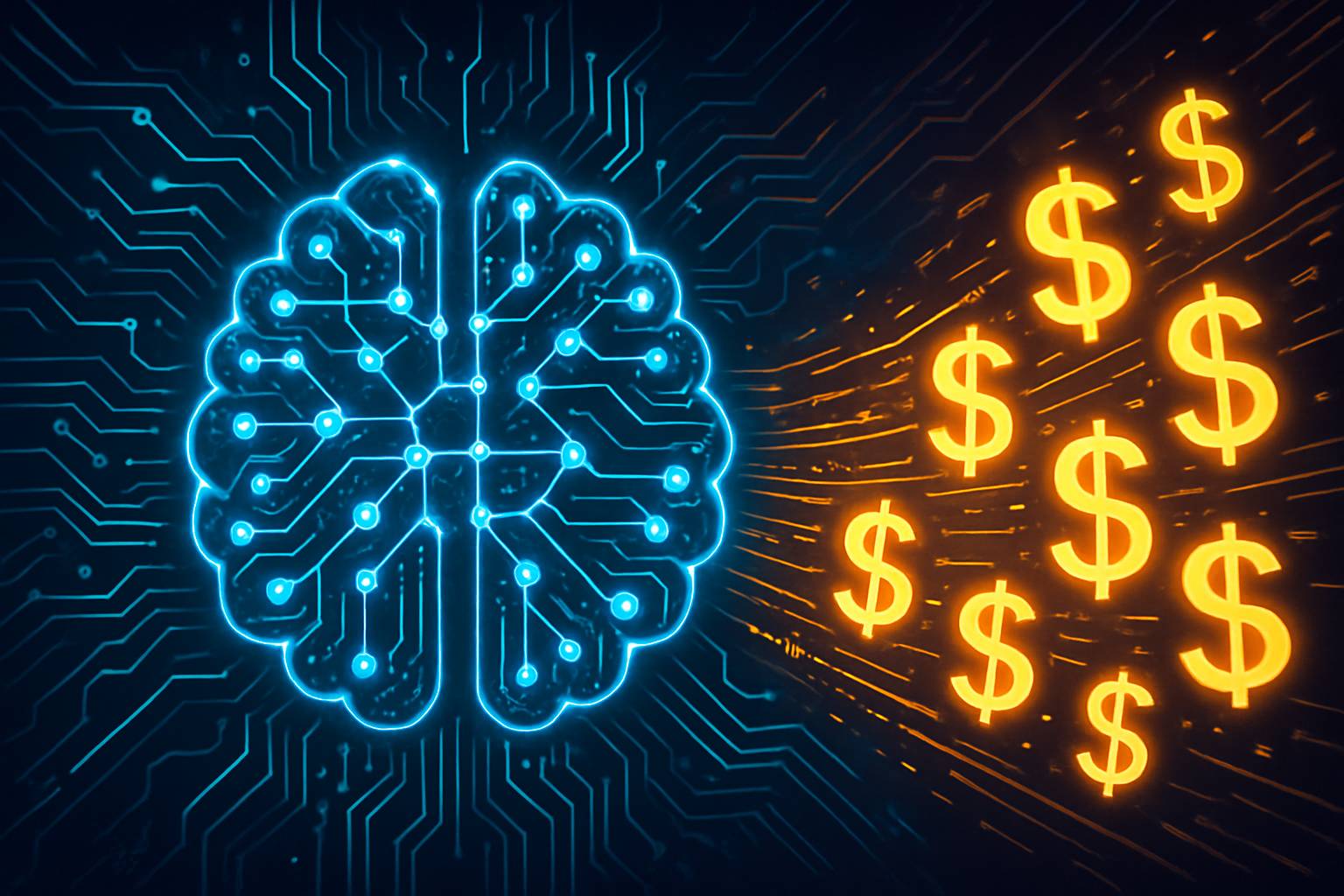
AI CERTS
15 hours ago
Funding Surge For Self-Optimizing AI Models
Furthermore, seat expansion has been dramatic, including one jump from ten to 450. These figures underscore strong early demand for agentic, data-driven assistance. In this piece, we examine how Self-Optimizing AI Models underpin WisdomAI’s product strategy, funding trajectory, and competitive outlook. Subsequently, we outline governance considerations and practical steps for adoption.
Funding Fuels Rapid Expansion
Investors see clear momentum around WisdomAI’s agentic analytics platform. Moreover, the $50 million Series A represents one of the largest early rounds in this niche. Aditya Naganath of Kleiner Perkins noted that dashboards alone no longer suffice; insight must reach every employee. Additionally, NVIDIA’s venture arm participation hints at future infrastructure collaboration.

- Round size: $50 million Series A
- Total capital: $73 million to date
- Lead investor: Kleiner Perkins
- New participant: NVentures (NVIDIA)
- Customer count: ~40 enterprises
Consequently, WisdomAI plans aggressive hiring across engineering, research, and go-to-market functions. The firm will also expand global sales coverage and deepen vertical specializations. These moves aim to accelerate revenue while tightening product feedback loops.
In summary, capital infusion removes near-term resource constraints. However, execution discipline still determines sustainable growth.
These funding details provide context for market positioning. Meanwhile, a broader industry view sets the stage for comparison.
Broader Market Context Snapshot
The business intelligence sector remains sizable and fragmented. Fortune Business Insights valued the 2024 market at roughly $32 billion. Moreover, analysts forecast expansion to more than $63 billion by 2032. Such growth reflects persistent demand for adaptive analytics and modern data tooling.
In contrast, legacy dashboard suites struggle to deliver timely, actionable recommendations. Consequently, enterprises explore autonomous enterprise AI platforms that close analysis loops and surface next actions. Therefore, venture dollars flow toward Self-Optimizing AI Models capable of continuous learning and context retention.
Industry consultants also predict a steep rise in agent adoption. Gartner expects decision intelligence capabilities inside 60% of analytic deployments by 2027. Furthermore, McKinsey estimates that proactive insights could unlock trillions in productivity gains across sectors.
Overall, market forecasts confirm a fertile landscape. Nevertheless, technical differentiation remains essential for share capture.
These trends highlight the opportunity landscape. Subsequently, technology specifics reveal WisdomAI’s competitive moat.
Inside WisdomAI Technology
WisdomAI markets an “AI Data Analyst” that converses with business users. Additionally, a persistent Enterprise Context Layer encodes metrics, lineage, and tribal knowledge. Consequently, outputs align with corporate definitions and reduce hallucination risk.
Autonomous Decision Engine Design
The platform uses large language models only to translate intent into SQL-like queries. Therefore, deterministic logic produces the final answers, ensuring auditability. Moreover, embedded adaptive analytics continuously adjust thresholds based on observed patterns. As a result, Self-Optimizing AI Models improve without manual rule-tuning.
Enterprise Context Layer Explained
This semantic fabric persists across sessions and teams. In contrast to classic semantic layers, the context layer evolves with dialogue history and new data sources. Furthermore, it stores reasoning traces, enabling compliance reviews.
The September 2025 “Proactive Agents” add-on extends functionality. Subsequently, always-on monitors learn critical metrics, detect anomalies, and notify stakeholders. Some customers let agents trigger actions, such as throttling marketing spend during conversion dips. Therefore, WisdomAI edges toward full autonomous enterprise AI.
To summarize, technical architecture combines language understanding, deterministic execution, and continuous feedback. Nevertheless, strong governance remains vital to enterprise trust.
These design choices solve several accuracy hurdles. However, governance and risk factors demand equal attention.
Governance And Emerging Risks
Agentic systems amplify decision velocity yet raise accountability concerns. Moreover, regulators scrutinize opaque reasoning that affects finances, health, or employment. Consequently, organizations must embed guardrails before scaling Self-Optimizing AI Models.
WisdomAI addresses oversight through RBAC, SSO connectors, and kill-switch workflows. Additionally, reasoning traces allow auditors to review each step. Nevertheless, data quality challenges persist; integration pitfalls can poison outcomes.
Analysts recommend phased rollouts with human-in-the-loop validation. Furthermore, enterprises should align deployments with internal AI governance frameworks. Professionals can enhance their expertise with the AI + Foundation Certification to master these practices.
In short, robust governance transforms potential risk into managed innovation. Consequently, firms adopting autonomous enterprise AI gain competitive resilience.
These safeguards create adoption confidence. Meanwhile, the external battlefield continues to intensify.
Competitive Landscape Shifts
Incumbent BI vendors accelerate assistant features. Microsoft adds Copilot to Power BI, while Salesforce integrates Einstein into Tableau. Moreover, ThoughtSpot and GoodData tout adaptive analytics upgrades. Consequently, differentiation hinges on context fidelity, multi-modal input, and vertical depth.
WisdomAI leverages its context layer and proactive agents as unique selling points. Additionally, NVentures’ backing may unlock optimized GPU resources, cutting inference costs. However, larger platforms enjoy distribution advantages and deep channel relationships.
Overall, rapid feature convergence pressures startups to maintain an innovation pace. Nevertheless, deep focus can outmaneuver slower giants in specific domains.
These dynamics signal looming consolidation waves. Subsequently, strategic planning becomes paramount for WisdomAI and its peers.
Strategic Outlook Ahead
WisdomAI plans to triple its engineering headcount and open regional offices. Furthermore, leadership prioritizes healthcare, energy, and SaaS verticals where real-time insights drive material savings. Meanwhile, reference customers like Cisco and ConocoPhillips validate cross-industry potential.
The firm also eyes partnerships that embed Self-Optimizing AI Models into existing workflows. Consequently, integrations with collaboration suites could accelerate seat expansion. Moreover, transparent benchmarks may differentiate accuracy claims against rivals.
In summary, disciplined execution, measured autonomy, and ecosystem alliances will determine long-term success. Nevertheless, market momentum favors vendors delivering tangible ROI today.
These forward moves underscore WisdomAI’s ambition. Finally, we conclude with actionable recommendations for practitioners.
Conclusion And Next Steps
WisdomAI’s funding surge validates enterprise appetite for Self-Optimizing AI Models. Moreover, expanding market forecasts and rising governance tooling signal sustained growth. Technology choices—context layer, deterministic execution, and proactive agents—position the startup well against larger rivals. However, organizations must manage data quality, oversight, and change management during adoption.
Therefore, leaders should pilot high-value use cases, monitor reasoning traces, and train staff on responsible operations. Professionals seeking structured knowledge can pursue the AI + Foundation Certification. Act now to harness adaptive analytics and unlock advantages before competitors close the gap.



